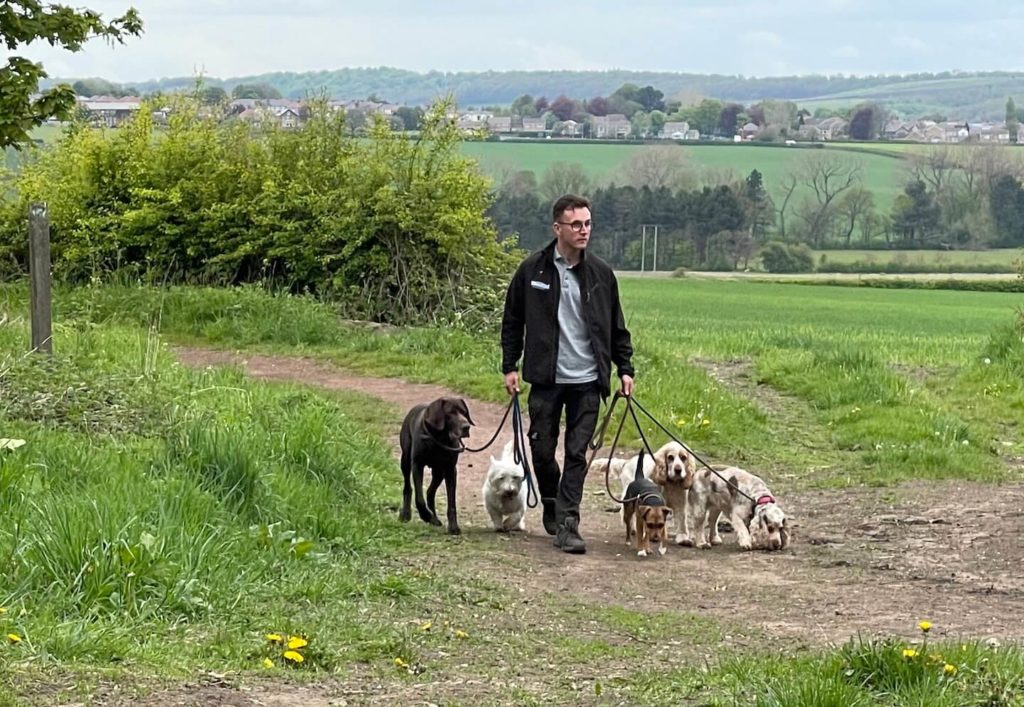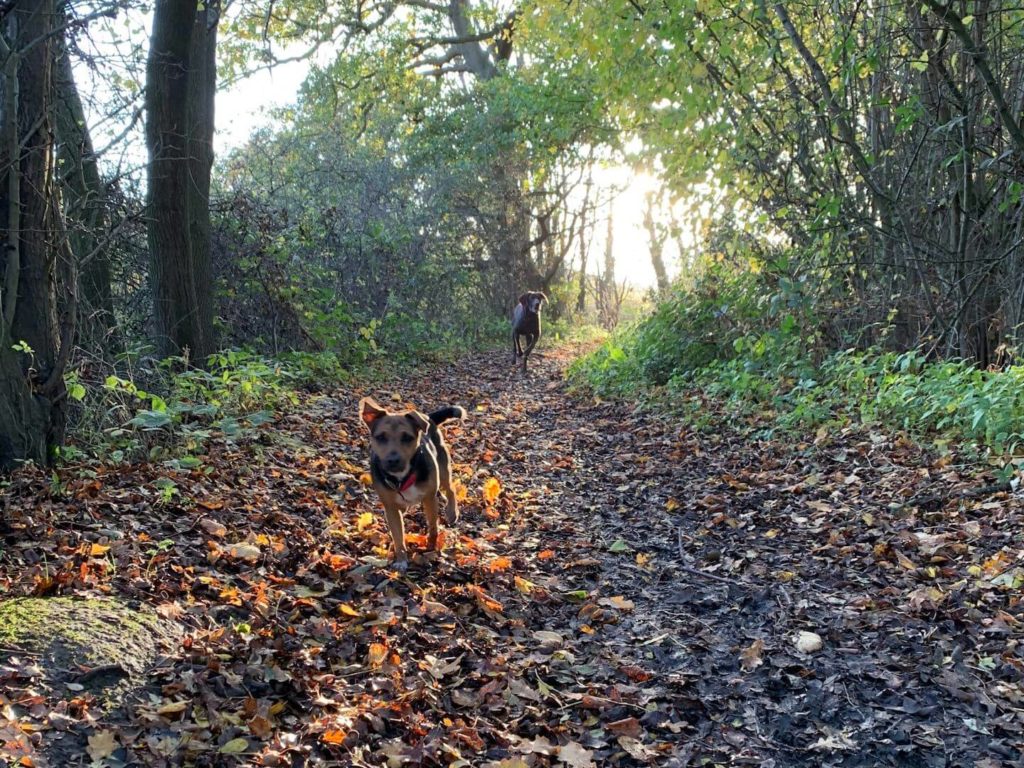Heeling the way forward!
Teaching a dog to heel is a command all dogs need. It opens up so much flexibility when we are out and about with our reliable companions, eliminating the worry of wondering whereabouts they may be or what they might be up to when our backs are turned. Whether you are walking through your local estate or stopping on a trail for a chat with a friend, dogs that heel well are generally the most obedient and well mannered. Achieving a perfect heel both on and off lead allows owners to enjoy taking the dog for a walk, it no longer becomes a chore which man dog owner face on a daily basis.
Unfortunately this command can take a very long time to teach, but bare with us. It’s definitely worth it. Seeing the perfect heel is like magic to the everyday dog owner and what you are witnessing is a LOT of training. The thing to remember with young dogs is that the world is an exciting place, they are distracted very easily and will almost certainly test your patients over the course of their lives.
Which side should my dog walk?
Many dogs are always trained to heel to the left hand side, purely because 90 percent of us are right handed. Apply this to a working environment such as a grouse shoot, the dog would be positioned to the opposite side on which the gun is held. However either side is fine and totally your preference. The dog should be positioned with their nose in line with your knee; not in front where they may trip you up, and not behind you hiding out of sight.
Teaching an off lead heel first ensures you focus your full attention on your pup. Your first job is to get your pup to want to be with you, there are many ways to achieve this such as treats, play & a pleasant voice. See our Recall blog for more handy tips!
We all like to hang around with friends who interest us and it’s the same with dogs, If you can’t be bothered then you shouldn’t expect them to stay with you. Begin by encouraging your dog to the preferred side, if you have a multiple dog household a sensible choice would be to distribute your dogs either side to provide enough space for your dogs when walking to heel.
Encouraging them to your knee is the initial step, using a small amount of food as a reward encourage them to walk a few paces alongside you whilst giving the ‘heel’ command then reward. Short and sweet sessions are always more beneficial in the early stages as it prevents your dog from becoming bored. As a matter of fact feeding time is generally a good idea as the dog will be more motivated and inclined to work for the reward. As you start to make progress lengthen the steps you take before giving the reward.
When working on a heel if the dog is away from you, recall them and as they approach introduce the ‘heel’ command to encourage them to check in by your side alongside your knee, reinforcing as they walk alongside you (especially as pups). Whilst they are walking alongside you, add in turns both left and right to ensure they get used to correctly heeling as your turn. Dependant on which side your dog is being taught the heel at can effect the initial training of this step. For example, if the dog is heeling to your left hand side you would turn to the left and use your body as a natural barrier to guide them with the turn.
As you are developing the behaviour of your pup as it grows older and they begin to understand the ‘heel’ command. Get into the habit of only issuing the command once, as a well trained dog should only require the one command and stay in place until told otherwise. Over time lengthen your reward times significantly whilst varying walking distances and turns. Continuously read your dogs behaviour, if you see the are loosing interest switch the routine up so they don’t pick up the habit of wandering away.
Lead On!
Whilst teaching an off lead heel seems an unusual way to start this process, it actually works in your favour. By now your pup should be used to wearing a collar and not be overly anxious about the sensation of something around their neck. Not only for lead walking purposes but any other circumstances that may arise in the future. If taught correctly; your dog at this point should be off lead heeling to your knee, when you attach the lead you should have no reason pull or drag it backward. Introduce your pup to new and exciting places in short sessions, Your pup will undoubtably want to explore there new found world and you do not want to encourage your dog to be at the end of the lead for the duration of the walk. It’s an experience both of you will not enjoy, and ultimately it is because you are not interesting enough for your pup. If you are struggling to get there attention then focus more on your training at home of lead before you venture back into the open world. If you continue you will create a never ending tug of war game that is incredibly hard to overcome.

